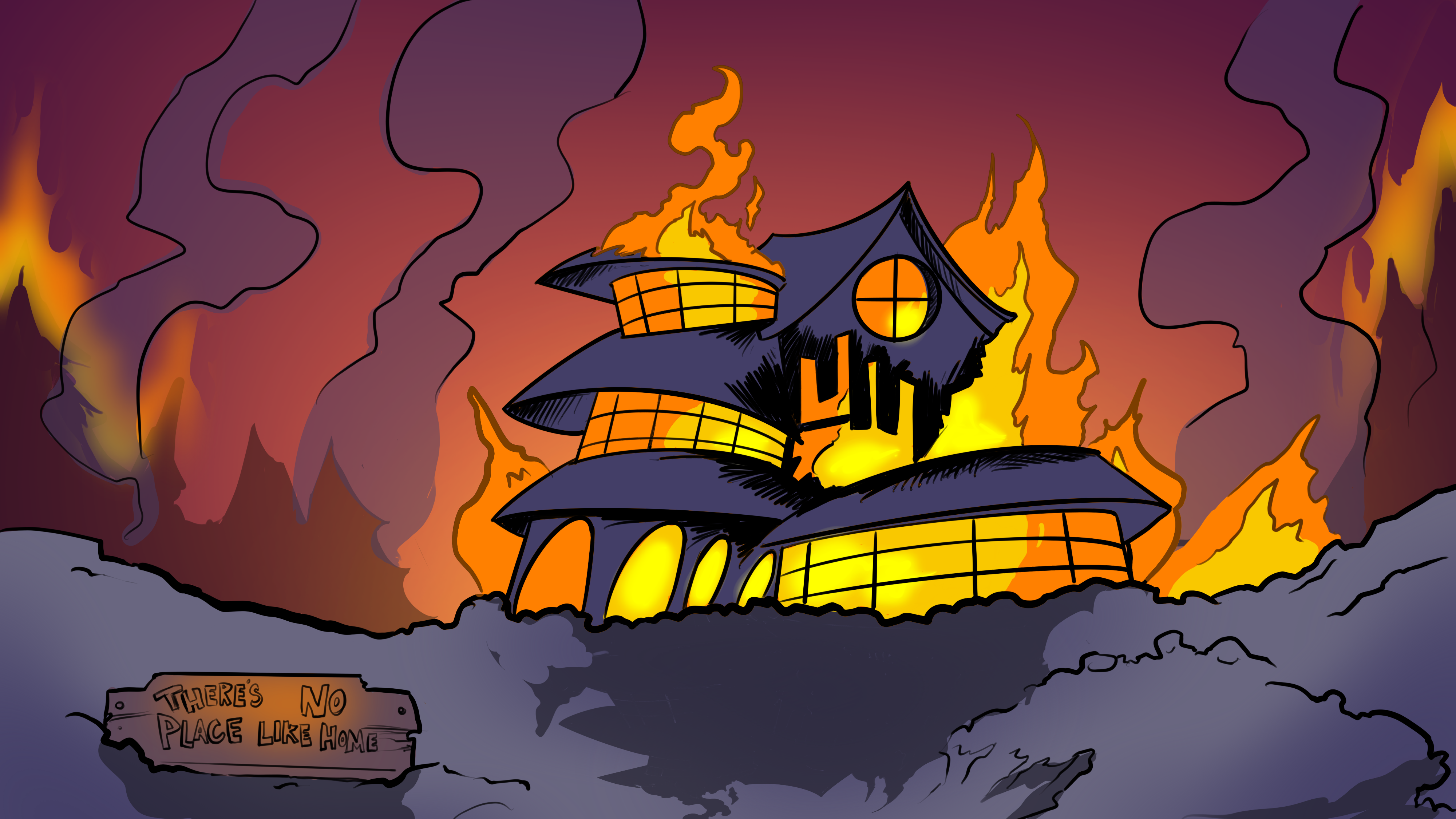Summary
This lesson will focus on the impacts of the Cold War era in U.S. history. Guiding this lesson is an essential question focused on the use of fear. Hands-on activities, reading of a relevant news article, and argumentative writing will assist students in their exploration of brinkmanship and mutually assured destruction (MAD) during the Cold War. A resource page is provided for teachers who would like additional information about brinkmanship, MAD, and fallout shelters.
Essential Question(s)
How can fear impact a nation?
Snapshot
Engage
Students evaluate different individuals to decide who would be a best fit for a fallout shelter community and review elements of the Cold War.
Explore
Students play a modified game of chicken and connect this to the concept of brinkmanship. Students end the Explore section by using the Synectics strategy to show understanding of brinkmanship.
Explain
Students use active reading strategies to analyze a newspaper article about the historical and contemporary aspects of mutually assured destruction.
Extend
Students first use a T-Chart to show understanding of the historical and contemporary elements of mutually assured destruction, then they build a claim and defend it with their peers through a Four Corners activity.
Evaluate
Students individually show understanding of brinkmanship and mutually assured destruction through a CER activity that supports argumentative writing. Students write about the Cold War concepts by using a claim, evidence, and reasoning.
Materials
Survival Activity (attached)
Brinkmanship Visuals (attached)
Teacher Resources - Fallout Shelters, Brinkmanship, MAD (attached)
MAD Visuals (attached)
MAD Article (attached)
CER Template (attached)
CER Rubric (attached)
Dice
Engage
Distribute the Survival Activity to students. Give students a few minutes to read the directions. If modifications are needed, read the directions out loud with the whole class. Do not read Part II out loud to them at this time. Once the directions have been read out loud, show them the video titled “How to Build a Home Fallout Shelter in the Cold War."
This video will give students a frame of reference for the Survival Activity. Part I requires students to examine the information and make choices individually. Give them approximately 5 minutes to complete Part I on a sheet of paper.
Once students have completed Part I, ask them to read the directions for Part II. Ask if anyone has questions about Part II or what it means to form a consensus. Once everyone understands the task, inform students they will have approximately 10 minutes to complete Part II. Ask students to get into groups of 3-4 and have their consensus ready in 10 minutes. After all the groups have completed Part II, allow the groups to share with the whole class for a few minutes. Invite students to share who was left off the list and discuss what influenced their decisions.
Share with students that they are going to participate in a lesson that focuses on how fear during the Cold War really impacted our country. Ask students to briefly share what they already know about the Cold War or what they remember from previous lessons.
After the Survival Activity, show students the video titled “Duck and Cover."
Before beginning the video, inform students that the Cold War was a very real fear to everyone, including children. Inform them that the video they are about to watch was a public service announcement created in 1951 to inform children about nuclear weapons and fallout.
Explore
Place the essential question on the board for students to see. The question will be addressed throughout the lesson and frame the overall theme of the lesson. Once the question is on the board, ask students to engage in a Think-Pair-Share activity. Allow students to think for a minute about how fear impacts our nation. Encourage them to think of current issues that cause fear in our country and how that fear has impacted our society.
After students have a minute to think about it, ask them to turn to a partner and discuss. Give students 2-3 minutes to share with each other their thoughts. Once students have had time to discuss with a partner, allow students to share their thoughts with the whole class.
Open the attached Brinkmanship Visuals slide deck. The visuals in this slide deck will guide the Explore activities.
Ask students if they are familiar with the game of chicken. Allow students to share the basic premise of the game. For students who might not have a clear knowledge of the concept, show students the visual for the game of chicken (slide 2). Next, show them the chart with a visual of the several different possibilities within the game of chicken (slide 3).
Slide 2 will enable students to play a modified game of chicken so they can understand that it is a game of unpredictable risks. This game of chicken can be played with dice to demonstrate the basic premise of chicken:
Give one of the students in class the die. If they roll a 1, 3, or 5, the class will swerve. If they roll a 2, 4, or 6, the class will go straight.
Give another student the die. If they roll a 1, 3, or 5, the "opponent" will swerve. If they roll a 2, 4, or 6, the "opponent" will go straight.
Once students understand the idea of chicken, show them the definition for brinkmanship (slide 4). On the next slide (slide 5), there are additional visuals to remind them that this was a conflict between the United States and the Soviet Union. Again, if possible, play the modified version of brinkmanship using the brinkmanship chart (slide 6). Divide the class in half. One side of the room will be the United States. The other side of the room will be the Soviet Union.
Give one of the students from the United States side in class the die. If they roll a 1, 3, or 5, the class (United States) will avoid firing weapons. If they roll a 2, 4, or 6, the class (United States) will fire weapons.
Give another student from the Soviet Union side in class the die. If they roll a 1, 3, or 5, the Soviet Union will avoid firing weapons. If they roll a 2, 4, or 6, the class the Soviet Union will fire weapons.
To check for understanding, use the formative assessment instructional strategy Synectics. Share that Synectics is a way for students to make connections between an academic concept and real life. Distribute the "Synectics" handout, or students could copy a template from the board. As a class, have students discuss how brinkmanship is similar to a game of chicken. With the class, ask students to come up with another concept that is similar to brinkmanship (e.g., the game of paper, rock, scissors). Discuss this option, and have students fill in their answers under the "game of chicken" box. Once students have an understanding of how Synectics work, allow them to work with a partner or in a small group to fill in the rest of the boxes remaining. Together, they should come up with two additional ideas.
Explain
Open the attached MAD Visuals slide deck. The graphic organizers in this slide deck will guide the Explain and Extend activities.
Briefly discuss how brinkmanship between the United States and the Soviet Union led to the theory of mutually assured destruction (MAD; slide 1). MAD is a military theory of nuclear deterrence which holds that neither side will attack the other if both sides are guaranteed to be totally destroyed in the conflict. Inform students they will be exploring MAD as a historical theory but also a current threat. Students will read the article “How did we forget about mutually assured destruction?” and can be found at and printed from the following link: http://www.bbc.com/news/magazine-17026538.
In order to actively engage with the article, show students the visual for CUS and Discuss (slide 2). This strategy gives students a framework for active reading. Students will do the following: circle unfamiliar vocabulary, underline the important details, and put a star next to the main idea.
Now, distribute the MAD article. Give students the time needed to read the article. During their reading, they should be annotating using the CUS and Discuss strategy.
Extend
Once students are done with the article, ask students to complete the T-Chart (slide 3). The T-Chart requires students to reflect on facts from the article that students need to know. The left-hand side of the chart is a place for them to record facts that focus on historical aspects of MAD. The right-hand side of the chart is a place for students to focus on current issues of MAD.
Once students have had time to explore the historical and contemporary aspects of MAD, allow students to debate the question, “Should we fear our own nuclear destruction?" Students will debate this through the Four Corners strategy. This strategy will encourage students to think about the facts of MAD in relationship to the essential question revolving around fear. Place signs around the room that say: Strongly Agree, Agree, Disagree, and Strongly Disagree. Write the question on the board or put it on a projector screen. Ask students whether or not we should still be scared based on the information in the article. Students should pick a corner of the room that best represents their response to the question. Once students have gathered in their appropriate corners, allow each corner to defend their stance.
Evaluate
Once students have had the opportunity to discuss the historical and contemporary aspects of MAD as a class, students will individually respond through argumentative writing. Before asking students to write their argumentative paragraph, scaffold their arguments by using the CER template. CER stands for claim, evidence, and reasoning. Students will begin to piece together their argument by using the CER template.
Once students have brainstormed and organized their argumentative writing, students will write a well-developed CER paragraph defending their stance on the prompt question: Based on the historical and contemporary impacts of the Cold War, should we be scared? You can use the provided rubric to assist with evaluating students' writing.
Resources
MAD Article: de Castella, T. (2012, February 15). How did we forget about mutually assured destruction? BBC News Magazine. Copyright 2016, BBC. Retrieved from http://www.bbc.com/news/magazine-17026538
Do It Yourself Fallout Shelter Video: forquignon. (2006, November 5). Do it yourself fallout shelter [YouTube Video file]. Retrieved from https://youtu.be/WD0vV9xrC14
Four Corners Instructional Strategy: K20 Center. (n.d.). Four corners. Instructional Strategies. Retrieved from https://learn.k20center.ou.edu/strategy/d9908066f654727934df7bf4f5064550
Synectics Instructional Strategy: K20 Center. (n.d.). Synectics. Instructional Strategies. Retrieved from https://learn.k20center.ou.edu/strategy/d9908066f654727934df7bf4f505b6b0
Think-Pair-Share Instructional Strategy: K20 Center. (n.d.). Think-pair-share. Instructional Strategies. Retrieved from https://learn.k20center.ou.edu/strategy/d9908066f654727934df7bf4f5064b49
Duck and Cover Video: Nuclear Vault. (2009, July 11). Duck and cover (1951) Bert the turtle [YouTube Video file]. Retrieved from https://youtu.be/IKqXu-5jw60



